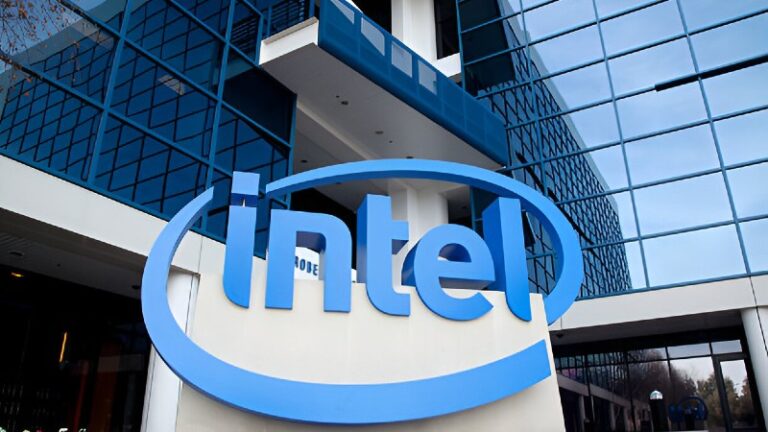In 2025, Intel once the undisputed titan of semiconductor manufacturing is undergoing its most significant restructuring in over a decade. With layoffs affecting between 15% and 20% of its Intel Foundry workforce, and similar reductions planned across other business units, the move has sent shockwaves through the tech industry. But beneath the headlines, what does this transformation signal for Intel’s future, its employees, and the global chip supply chain?
The Scope
Intel announced plans to lay off between 8,170 to 10,890 factory workers globally starting in mid-July 2025, according to internal communications and verified reports. These layoffs follow a challenging financial year and come after the company already shed 15,000 jobs in 2024.
| Year | Total Workforce | Jobs Cut |
|---|---|---|
| 2023 | ~124,800 | N/A |
| 2024 | ~109,000 | 15,000 |
| 2025 (projected) | ~98,000* | 10,000+ |
From Reduction to Recalibration
What makes this wave of Intel layoffs unique is not just the scale, but the strategic philosophy behind them. New CEO Lip-Bu Tan has been blunt in his assessment: Intel had become too bloated, too slow, and too inward-focused. In his words, “The best leaders get the most done with the fewest people.”
Rebalancing Talent, Not Just Cutting Costs
Intel is shifting its internal focus from managing large teams to building smaller, more agile, high-impact units. This is not simply about cost-cutting; it’s about redefining organizational culture in an era where innovation cycles are shorter and more competitive.
For example, while Intel is letting go of many legacy manufacturing roles, it is doubling down on advanced chip engineers, EUV lithography specialists, and AI systems experts. These targeted investments reveal Intel’s renewed focus on next-generation technologies over legacy product lines.
Intel’s Three-Point Strategy
- Flattening Management: Reducing layers of bureaucracy to speed up decision-making.
- Selective Terminations: Choosing who stays based on performance, skill alignment, and strategic fit.
- Portfolio Optimization: Shutting down underperforming units like the automotive chip division, while reinforcing its core focus areas (client computing and data centers).
Ripple Effects
While the layoffs are global, they are especially concentrated in Oregon and California. Oregon — home to Intel’s Silicon Forest and 20,000 employees — is expected to take a major hit. In Santa Clara, California, 107 positions have already been officially listed for termination, including highly skilled roles such as:
- 22 Physical Design Engineers
- 6 Cloud Software Architects
- 1 AI Systems Manager
- 1 Vice President of IT
- Several Project and Strategy Managers
Community and Economic Impact
Intel is Oregon’s largest private employer. Significant job losses there will have cascading effects on housing, local business revenue, and regional tax income. Meanwhile, the status of Intel’s $7.9 billion federal CHIPS Act subsidy — now under Trump-era review — remains uncertain. The Ohio facility delay to 2030 signals a cooling appetite for rapid expansion.
What It Means for Intel’s Future
Tan’s leadership marks a decisive pivot for Intel. If successful, the layoffs could lead to a leaner, faster-moving company better aligned with next-gen tech demand. If not, Intel risks losing top talent, lowering morale, and sacrificing operational depth.
Opportunities Amid Turmoil
This reset provides a rare opportunity for Intel to reinvent itself at the structural level. Examples from past tech turnarounds (e.g., Microsoft under Satya Nadella, or AMD’s Lisa Su-led reinvention) show that cutting staff doesn’t always mean shrinking ambition. With AI, 2nm fabrication, and High-NA EUV on the horizon, Intel has the tools — but it must execute flawlessly.
Key Takeaways
- Layoffs Affect 15–20%: Over 10,000 factory and other roles impacted globally.
- No Buyouts This Round: Layoffs are performance- and strategy-driven.
- Not Just Downsizing: Intel is recalibrating to focus on future technologies.
- Risks & Rewards: A leaner Intel could innovate faster — or falter under morale loss and public scrutiny.
Conclusion
Intel’s 2025 layoffs are a bold and risky move. More than a cost-cutting exercise, they represent a high-stakes bet on speed, innovation, and cultural reinvention. Whether this gamble pays off will depend on execution, leadership, and Intel’s ability to attract and retain the right kind of talent in a fiercely competitive industry.
Frequently Asked Questions (FAQs)


